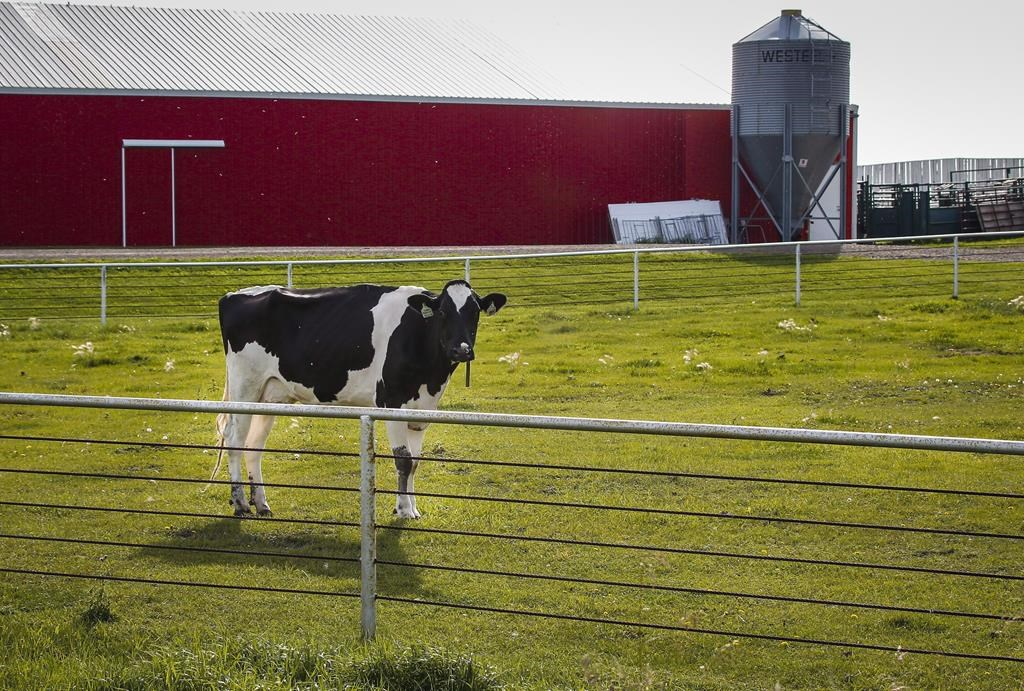Support strong Canadian climate journalism for 2025
In Quebec, farmers face down floods and bug infestations. In West Africa, growing deserts bring soil degradation and water shortages.
“We can’t plan anything anymore,” says Seye Saliou, training manager at Réseau des organisations paysannes et pastorales du Sénégal, an agricultural association for farmers and producers in the coastal country of 15 million inhabitants located in the Sahel region immediately south of the Sahara desert.
Yet planning is exactly what farmers, managers, and researchers from around the world met to do in Quebec last month, as international organizations anticipate more food will be needed for more people, and the industry needs to figure out how to reduce its impact on climate change.
In 2016, the United Nations agency for food and agriculture estimated the the planet would need to significantly increase food production in the coming decades to feed everyone.
Based on its estimates of the anticipated demand, the UN's Food and Agriculture Organization (FAO) projected that annual global production of crops and livestock in 2050 would need to be 60 per cent higher than it was in 2006.
Political leaders say this would be no easy task for an industry that is the world's second largest source of greenhouse gases after energy production.
The United Nations climate panel, the IPCC, estimated in 2010 that 21 per cent of the greenhouse gas emissions were originating in agriculture, forestry and other changes in the use of land. The IPCC estimated that energy production was responsible for 47 per cent of global emissions.
Agriculture faces a double challenge: feeding and employing an increasing population while becoming more environmentally-friendly.
It was with these challenges in mind that researchers, farmers and managers from different countries gathered in Quebec City for a three-day conference hosted by the Quebec government and the FAO to brainstorm about improving practices in a worsening climate.
The discussions were not always easy, since farmers face different challenges depending on where they're from.
For example, most production in the Sahel region, where Saliou is from, comes from smallholder farms where families exploit very small parcels of land, use limited or no chemicals and don’t have access to the same type of equipment and machinery available in North America. The 3,860-kilometre coast-to-coast Sahel region, which includes Senegal, Mauritania, Sudan and Eritrea, is a largely semi-arid land.

International exchange needed
But Julia Wolf, manager at the FAO, is convinced that there's room for farmers from different regions to exchange ideas and cooperate.
“The Paris agreement was a big breakthrough mainly because the world had to come together, both developing countries and developed countries,” she says.
“It calls for a bigger need for countries to exchange on topics they want to learn about. You now have this big community where you have developing and developed countries moving ahead on climate, wanting to enhance actions and ambitions.”
For her, the main way to jumpstart action is to get governments to share information about best practices. That is why she has been working in programs helping countries with similar national goals to adapt to climate change as part of the Paris agreement share their best practices.
One of the FAO’s most recent initiatives has been to create a network of 58 developed and developing countries including Canada, Mongolia, Zimbabwe and Germany. Representatives on the network have already met to discuss their ideas on adapting their nation’s agriculture and land use to meet their climate targets.
New Zealand, for instance, established a specific group, the Biological Emissions Reference Group, to better understand how farms can reduce their emissions. The group’s assessment will be the basis for future policies on climate change in the agricultural sector.
“It's a new network where we focus on how can we ... ensure that agriculture is part of the climate solution,” explains Wolf.
Canada has also been involved in the international network to support climate action in developing countries.
"Canada is currently supporting the implementation of Chile and Mexico's (Nationally Determined Contribution) through the deployment of technologies respectively in the waste management and oil and gas sector," Environment Canada spokesperson Amélie Desmarais writes in an email.
Patrick Girard, spokesperson at Agriculture and Agri-food Canada adds that Canada is a member of the Global Research Alliance on Agricultural Greenhouse Gases, to cooperate on research in technologies to develop greener agricultural systems.
Wolf says the implementation of Paris Agreement means all countries are equally looking for solutions and trying to adapt.
She has noticed two major problems so far though: the lack of funding available to ensure the agriculture industry’s environmental transformation and the tendency to look at climate change and agriculture separately despite their intertwinement.
“In many cases, climate is discussed with climate people meaning ministers of environment so what needs to happen is not just to bridge climate and agriculture in developed and developing but create alliances between countries and between sectors.”







Comments
I'm glad to see a discussion of global food security in the face of climate change. Thank you.